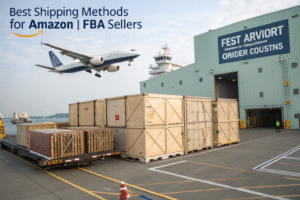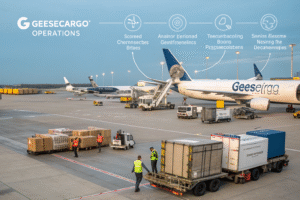Design a visual of a global shipment planner reviewing a 2025 calendar with marked tariff and delay hotspots. Include visuals of clocks, shipment booking interfaces, and calm, professional freight managers making decisions.
Shipping in 2025 is not just about moving goods—it's about timing them perfectly. With record-high tariffs, erratic customs policy shifts, and tightening carrier schedules, knowing when to ship can save thousands in duties and weeks in delays.
The best shipping windows in 2025 fall just before each major tariff enforcement wave and between port congestion cycles. These sweet spots vary by lane, product category, and customs jurisdiction—but they’re critical for minimizing risk.
In this article, I’ll share the most optimal times to ship in 2025 by region, explain how duty enforcement timelines work, and give you tools to forecast congestion and rate surges before they strike.
When Are Tariff Hikes Scheduled in 2025?

Global trade authorities often release tariff changes in policy bulletins—but implementation dates often catch shippers off guard. Here's a simplified forecast of 2025’s biggest tariff moments:
| Region | Tariff Spike Date | Affected Products |
|---|---|---|
| Laos & Myanmar | August 1 | Apparel, gifts, accessories |
| USA (Section 301) | October 1 | Tech, batteries, synthetic apparel |
| EU (CBAM) | September 15 | Carbon-heavy goods, textiles soon |
| India | Rolling Q3 | Plastics, electronics, base metals |
Why Does Timing Matter So Much?
Because tariffs apply based on customs clearance date, not invoice date. That means if your shipment lands a day after enforcement, even if it left China a week before, you still pay the new rate.
To understand which enforcement dates apply to your category, check WCO Trade Tools or Access2Markets for EU-bound goods.
Can You Ship Earlier and Store Duty-Free?
Yes. Using bonded warehouse entry in destinations like the U.S., Europe, or ASEAN lets you delay duties until the goods are released. You must, however, declare bonded status in your original paperwork.
For more info, see U.S. CBP Bonded Warehousing.
What Are the Best Weeks to Book Freight by Mode?

Shipping mode affects not just transit time, but also risk exposure to delays, customs timing, and fuel surcharges. Based on our logistics forecasts, here are the best periods to move:
Ocean Freight (Asia → USA / EU)
-
Best Booking Weeks:
- June 10–25 (before Q3 blank sailings begin)
- August 5–15 (before Golden Week peak loading)
- November 1–15 (pre-holiday rush buffer)
-
Avoid:
- July 1–15 (rate increases, capacity shifts)
- Late Sept–Early Oct (tariff & Golden Week overlap)
Sea-Intelligence publishes regular updates on carrier reliability and port performance.
Air Freight (Asia → USA / EU)
-
Best Booking Weeks:
- March 10–25 (post-CNY capacity surplus)
- August 20–Sept 5 (pre-peak, post-price dip)
-
Avoid:
- October (backlogs from e-commerce pre-holiday surge)
- December (limited cargo capacity due to passenger loads)
Freightos Air Index offers a real-time rate index across regions.
How to Avoid Port Congestion Penalties?

In 2025, port congestion is seasonal and region-specific. You’ll want to avoid routing through ports that are historically delayed during major festivals or Q4 surges.
Most Congested Periods:
- Los Angeles / Long Beach: July, October
- Rotterdam: March (labor actions), September (import surge)
- Singapore / Hong Kong: January–Feb (CNY impact)
Use MarineTraffic and Project44 Port Intel to monitor live congestion.
What About Smaller or Secondary Ports?
We’ve seen great success rerouting through:
- Oakland instead of LA
- Antwerp instead of Rotterdam
- Da Nang instead of Ho Chi Minh
Secondary ports often clear goods 2–3 days faster during peak weeks and are less likely to hold shipments for customs scrutiny.
How Do You Sync Shipping to Beat Tariff Timing?

Tariff timing is often precise down to the day the shipment is declared, so syncing production, booking, and customs prep is crucial.
Use Backward Planning
- Identify tariff enforcement date
- Count transit time and customs entry time
- Subtract 7–10 days for buffers
- Book shipment accordingly
Let’s say Section 301 hits October 1, and your air freight takes 4 days from Guangzhou to LA. Your cutoff for shipping should be September 24 latest.
Use PortCast or Flexport ETA Tools for predictive logistics visibility.
Should You Split Shipments to Reduce Risk?
Yes. If you’re unsure of delivery timing or if production delays are common, consider splitting into 2 shipments:
- Ship 70% early
- Hold 30% to ride out congestion or policy changes
This way, you protect your base inventory while leaving room to pivot pricing post-tariff change.
Conclusion
Shipping in 2025 is not just a logistical challenge—it’s a strategic advantage. Knowing when to ship, how to route, and where the duty deadlines fall allows smart importers to stay competitive while others scramble with penalties and stockouts.
At GeeseCargo, we help clients forecast tariff windows, optimize timing, and avoid delay traps—every week, every shipment.
If you’re planning your Q3 or Q4 orders, contact Ben Zhu at benzhu@geesecargo.com. Let’s pick the perfect time to move your cargo and protect your bottom line before the next wave of duties strikes.









